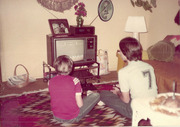View Post [edit]
| Poster: | JTW | Date: | May 12, 2004 4:42pm |
| Forum: | petabox | Subject: | Re: Selective powering of large petasites |
I’ve been looking into is having a system which has “on demand wake up” functionality for these reports. The “computers” and more importantly Hard Drives spend most of their time turned off in a sleep mode i.e. actually off and using a Network signal to the BIOS to bring them back to life when required. For large archives this could save thousands in power consumption, heat problems and should cut down hard drive failure rates. From a management side of things, if it’s possible to figure out in advance what is going to be accesses least, place them in the this long-term storage computer system, while keeping the more highly demanded data in always on subsystem.
From a topology point of view everything seems to be online 24/7 but in actuality it’s the requests for data that drive what systems are currently powered up. I’m on the prowl to see if anybody else is doing this before I invest time into creating our own solution for feasibility testing with off the shelf components and Linux. Initial with 4 boxes single 100GB drives (400GB total of data) and a master control. This controller will mount all the subsystem with NFS or SAMBA depend on the OS that worked best for hibernation / suspend modes. The idea being it’s only when someone access data in those subdirectories on the master controller that the other computer will power-up. Of course there needs to be some controlling program that knows the location of all the data you have, meaning you can’t just let the user start browsing the network looking for files as the systems will end up starting and stop ever couple of minutes.
Reply [edit]
| Poster: | brewster | Date: | May 12, 2004 5:32pm |
| Forum: | petabox | Subject: | Re: Selective powering of large petasites |
We have not done a large-scale test of this approach, but it sounds promising for many applications.
The petabox with spun-down disks would save 1/2 the power.
-brewster
Reply [edit]
| Poster: | Jp7733 | Date: | Feb 5, 2022 11:50am |
| Forum: | petabox | Subject: | Re: Selective powering of large petasites |
Reply [edit]
| Poster: | Jp7733 | Date: | Feb 5, 2022 11:54am |
| Forum: | petabox | Subject: | Re: Selective powering of large petasites |
 Live Music Archive
Live Music Archive Librivox Free Audio
Librivox Free Audio Metropolitan Museum
Metropolitan Museum Cleveland Museum of Art
Cleveland Museum of Art Internet Arcade
Internet Arcade Console Living Room
Console Living Room Books to Borrow
Books to Borrow Open Library
Open Library TV News
TV News Understanding 9/11
Understanding 9/11